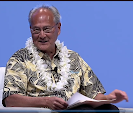Analyzing data submitted by about 1,400 recipients of high-cost subsidies from 1998 to 2008, Wallsten found that of each dollar distributed to recipient firms, about 59 cents goes to “general and administrative expenses” overhead such as planning, government relations, and personnel, rather than to making telephone services more affordable.
Thursday, February 24, 2011
59 Percent of Universal Service Funds Used for 'Overhead?
The universal service program in the United States, despite its good intentions, is ineffective, inefficient, and inequitable, said Scott Wallsten , research vice president and senior fellow at the Technology Policy Institute.
 Gary Kim was cited as a global "Power Mobile Influencer" by Forbes, ranked second in the world for coverage of the mobile business, and as a "top 10" telecom analyst. He is a member of Mensa, the international organization for people with IQs in the top two percent.
Gary Kim was cited as a global "Power Mobile Influencer" by Forbes, ranked second in the world for coverage of the mobile business, and as a "top 10" telecom analyst. He is a member of Mensa, the international organization for people with IQs in the top two percent.
Subscribe to:
Post Comments (Atom)
When Was the Last Time 40% of all Humans Shared Something, Together?
I miss these sorts of huge global events where 40 percent of living humans share a chance to build something for others.

-
We have all repeatedly seen comparisons of equity value of hyperscale app providers compared to the value of connectivity providers, which s...
-
It really is surprising how often a Pareto distribution--the “80/20 rule--appears in business life, or in life, generally. Basically, the...
-
Financial analysts typically express concern when any firm’s customer base is too concentrated. Consider that, In 2024, CoreWeave’s top two ...
No comments:
Post a Comment